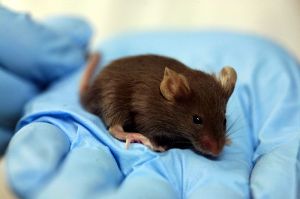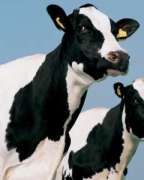You are currently browsing the monthly archive for January 2013.
Hi all
This week’s paper is titled Natural Killer Cell Dependent Within-Host Competition Arises during Multiple MCMV Infection: Consequences for Viral Transmission and Evolution ( McWhorter AR, Smith LM, Masters LL, Chan B, Shellam GR, et al. (2013) Natural Killer Cell Dependent Within-Host Competition Arises during Multiple MCMV Infection: Consequences for Viral Transmission and Evolution. PLoS Pathog 9(1):e1003111.doi:10.1371/journal.ppat.1003111) from PloS Pathogens.
So a mixture of viruses and immunology for us this week.
Abstract:
It is becoming increasingly clear that many diseases are the result of infection from multiple genetically distinct strains of a pathogen. Such multi-strain infections have the capacity to alter both disease and pathogen dynamics. Infection with multiple strains of human cytomegalovirus (HCMV) is common and has been linked to enhanced disease. Suggestions that disease enhancement in multi-strain infected patients is due to complementation have been supported by trans-complementation studies in mice during co-infection of wild type and gene knockout strains of murine CMV (MCMV). Complementation between naturally circulating strains of CMV has, however, not been assessed. In addition, many models of multi-strain infection predict that co-infecting strains will compete with each other and that this competition may contribute to selective transmission of more virulent pathogen strains. To assess the outcome of multi-strain infection, C57BL/6 mice were infected with up to four naturally circulating strains of MCMV. In this study, profound within-host competition was observed between co-infecting strains of MCMV. This competition was MCMV strain specific and resulted in the complete exclusion of certain strains of MCMV from the salivary glands of multi-strain infected mice. Competition was dependent on Ly49H+ natural killer (NK) cells as well as the expression of the ligand for Ly49H, the MCMV encoded product, m157. Strains of MCMV which expressed an m157 gene product capable of ligating Ly49H were outcompeted by strains of MCMV expressing variant m157 genes. Importantly, within-host competition prevented the shedding of the less virulent strains of MCMV, those recognized by Ly49H, into the saliva of multi-strain infected mice. These data demonstrate that NK cells have the strain specific recognition capacity required to meditate within-host competition between strains of MCMV. Furthermore, this within-host competition has the capacity to shape the dynamics of viral shedding and potentially select for the transmission of more virulent virus strains.
Author’s Summary:
Infection of the host with multiple strains of a pathogen is common and occurs with the herpesvirus, human cytomegalovirus (HCMV). However the effects of multi-strain infection on the host and the pathogen remain poorly studied. Here we show, in a mouse model, that infection of C57BL/6 mice with multiple strains of murine CMV (MCMV) results in profound within-host competition. Competition between the strains of MCMV is dependent on Ly49H+ natural killer (NK) cells. The NK cell activation receptor Ly49H receptor targets certain genotypes of the viral protein, m157. During multi-strain infection, strains of MCMV encoding an m157 capable of binding Ly49H are excluded from the salivary gland and the saliva of C57BL/6 mice, allowing for the shedding of only non-Ly49H binding strains of MCMV in the saliva. This within-host competition could therefore have significant impacts on the circulation of MCMV strains, as only the most virulent MCMV strains were present in the saliva.
I confess to not having had time to study the paper in great detail yet so the discussion points will have to follow shortly…
If anyone has any suggestions for discussion points please do suggest them below.
See you all on Tuesday, 8pm GMT.
Picture of laboratory mouse by Rama
This week’s paper is another virology paper – Schmallenberg Virus Pathogenesis, Tropism and Interaction with the Innate Immune System of the Host (Varela M, Schnettler E, Caporale M, Murgia C, Barry G, et al. (2013) Schmallenberg Virus Pathogenesis, Tropism and Interaction with the Innate Immune System of the Host. PLoS Pathog 9(1):e1003133.doi:10.1371/journal.ppat.1003133).
I don’t actually work with viruses – I will be spending the next week teaching myself some basic virology – but I am interested in new and emerging diseases so I was very pleased to see this paper out.
Author’s Summary
“Schmallenberg virus (SBV) was discovered in Germany (near the town of Schmallenberg) in November 2011 and since then has been found to be the cause of malformations and stillbirths in ruminants. SBV has spread very rapidly to many European countries including the Netherlands, Belgium, France and the United Kingdom. Very little is known about the biological properties of this virus and there is no vaccine available. In this study (i) we developed an approach (called reverse genetics) that allows the recovery of “synthetic” SBV under laboratory conditions; (ii) we developed a mouse model of infection for SBV; (iii) we showed that SBV replicates in neurons of experimentally infected mice similar to naturally infected lambs and calves; (iv) we developed viral mutants that are not as pathogenic as the original virus due to the inability to counteract the host cell defenses; and v) we identified mutations that are associated with increased virulence. This work provides the experimental tools to understand how this newly emerged virus causes disease in ruminants. In addition, it will now be possible to manipulate the SBV genome in order to develop highly effective vaccines.”
Abstract
“Schmallenberg virus (SBV) is an emerging orthobunyavirus of ruminants associated with outbreaks of congenital malformations in aborted and stillborn animals. Since its discovery in November 2011, SBV has spread very rapidly to many European countries. Here, we developed molecular and serological tools, and an experimental in vivo model as a platform to study SBV pathogenesis, tropism and virus-host cell interactions. Using a synthetic biology approach, we developed a reverse genetics system for the rapid rescue and genetic manipulation of SBV. We showed that SBV has a wide tropism in cell culture and “synthetic” SBV replicates in vitro as efficiently as wild type virus. We developed an experimental mouse model to study SBV infection and showed that this virus replicates abundantly in neurons where it causes cerebral malacia and vacuolation of the cerebral cortex. These virus-induced acute lesions are useful in understanding the progression from vacuolation to porencephaly and extensive tissue destruction, often observed in aborted lambs and calves in naturally occurring Schmallenberg cases. Indeed, we detected high levels of SBV antigens in the neurons of the gray matter of brain and spinal cord of naturally affected lambs and calves, suggesting that muscular hypoplasia observed in SBV-infected lambs is mostly secondary to central nervous system damage. Finally, we investigated the molecular determinants of SBV virulence. Interestingly, we found a biological SBV clone that after passage in cell culture displays increased virulence in mice. We also found that a SBV deletion mutant of the non-structural NSs protein (SBVΔNSs) is less virulent in mice than wild type SBV. Attenuation of SBV virulence depends on the inability of SBVΔNSs to block IFN synthesis in virus infected cells. In conclusion, this work provides a useful experimental framework to study the biology and pathogenesis of SBV.”
Discussion Points
- Was the paper well written?
- Were the methods appropriate and how useful will they be for future SBV/other virology work?
- If this was your work what experiments would you do next?
I will try to get a blog post on this paper up asap and will link to it in the comments. (I have also previously written about the virus, one post discussing the discovery of it and one post with some useful links and a podcast from the SGM.)
Happy reading everyone and I look forward to next week’s club, Tues 22nd Jan, 8pm GMT
Image
With thanks to CRV Arnhem for making this available via a Creative Commons licence http://commons.wikimedia.org/wiki/File:Koeienkoppen.jpg
OK so this is the first #microtwjc of the new year (yay!) and I would like to kick off the year with an important paper that appeared in PLoS Biology a couple of weeks back that investigated how the HIV virus is able to coax some of your own immune cells to help it infect another class of immune cells: your T cells. They focus on a kind of molecule known as a lectin (SIGLEC-1) that binds to HIV particles and can facilitate this process (I’ll write a more in-depth analysis of the work later but for now that’s all you need to know). This is a very important mechanism in HIV infection, disease and transmission and this paper could facilitate the development of drugs to target the molecule. Either way it’s a very nice, relatively simple paper. It also supersedes previous evidence implicating another molecule known as DC-SIGN in doing essentially the same thing. (Isn’t science fun?).
Siglec-1 Is a Novel Dendritic Cell Receptor That Mediates HIV-1 Trans-Infection Through Recognition of Viral Membrane Gangliosides
Izquierdo-Useros N et al 2012.
Abstract:
Dendritic cells (DCs) are essential antigen-presenting cells for the induction of immunity against pathogens. However, HIV-1 spread is strongly enhanced in clusters of DCs and CD4+T cells. Uninfected DCs capture HIV-1 and mediate viral transfer to bystander CD4+ T cells through a process termed trans-infection. Initial studies identified the C-type lectin DC-SIGN as the HIV-1 binding factor on DCs, which interacts with the viral envelope glycoproteins. Upon DC maturation, however, DC-SIGN is down-regulated, while HIV-1 capture and trans-infection is strongly enhanced via a glycoprotein-independent capture pathway that recognizes sialyllactose-containing membrane gangliosides. Here we show that the sialic acid-binding Ig-like lectin 1 (Siglec-1, CD169), which is highly expressed on mature DCs, specifically binds HIV-1 and vesicles carrying sialyllactose. Furthermore, Siglec-1 is essential for trans-infection by mature DCs. These findings identify Siglec-1 as a key factor for HIV-1 spread via infectious DC/T-cell synapses, highlighting a novel mechanism that mediates HIV-1 dissemination in activated tissues.
Author summary:
Mature dendritic cells (mDCs) capture and store infectious HIV-1 and subsequently infect neighboring CD4+ T cells in lymphoid organs. This process, known as trans-infection, is a key contributor to HIV pathogenesis, but the precise mechanism and the identity of the receptor on the mDC surface that recognizes viral particles remain controversial. Although the interaction of HIV-1 envelope glycoproteins with the C-type lectin DC-SIGN has been suggested to mediate HIV-1 capture and trans-infection, later studies revealed an envelope glycoprotein-independent virus capture mechanism in mDCs. Here, we identify Siglec-1 as the surface receptor on mDCs that boosts their uptake of HIV-1 and their capacity to trans-infect CD4+cells, leading in turn to HIV-1 disease progression. Siglec-1 captures the virus by interacting with sialyllactose-containing gangliosides exposed on viral membranes. This indicates that Siglec-1 functions as a general binding molecule for any vesicle carrying sialyllactose in its membrane, including exosomes and other viruses. We suggest that this natural pathway through mDC, which would normally lead to antigen processing and presentation, has been subverted by HIV-1 for its own storage and transmission.
Discussion points:
- Is it convincing evidence to say that SIGLEC-1 is the mediator of HIV trans-infection? What other evidence would you want to see?
- Why is their a difference to classical cell entry receptors for HIV and cell-binding receptors like SIGLEC-1?
- Could you/should you target this molecule?
- What does it mean for HIV infection and disease? Remember it is an LPS-upregulated molecule and could be implicated in co-infections with mycobacteria.
- What does it mean for HIV evolution/emergence? Do you think chimpanzee SIGLEC-1 is much different? Is this a reason why HIV could spillover?
Further reading:


